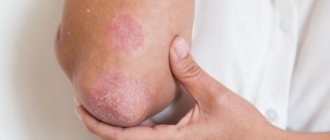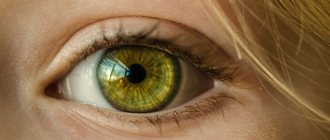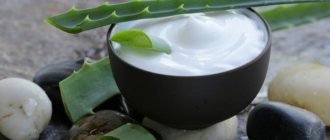There is no physical impact when there is cold, so for a long time such a reaction to cold was not considered a disease, since there is no allergen. Doctors began to classify this as an atypical or pseudo-allergy.
Nowadays, experts explain this reaction to cold by the fact that under the influence of low temperatures, the immune system, trying to protect the body, produces special biologically active substances that provoke allergies.
What causes allergies to cold?
There are many reasons for its manifestation, but they are based on skin contact with cold.
- Interaction with low temperature water: swimming in cold water, washing hands in excessively cold water.
- Wind with low temperatures, frosts. Cold allergy on the face of a child is common in winter, its provocateur is temperature fluctuations in the air outside and at home.
- Predisposition at the genetic level. The disease can be either acquired or transmitted from relatives. If the parents have a problem, the likelihood of manifestation in the child increases.
- Low temperature drinks and food. An allergy can develop after drinking ice-cold drinks or ice cream - in this case, swelling in the throat and tongue may occur, which negatively affects respiratory function. If such symptoms are noticed, it is necessary to avoid eating and drinking below room temperature.
- Taking antibiotics - they reduce the threshold of sensitivity and immunity, resulting in an increased likelihood of a reaction.
- Other diseases may be the culprits: tuberculosis, lupus erythematosus, problems with the thyroid gland, pneumonia, helminthic infestations, various cancers and abnormalities in metabolism. Allergies also develop after a number of diseases: mumps, sinusitis, dysbacteriosis, rubella, measles.
- Reduced immunity: in children, the protective functions of the body decrease after many illnesses. If a child is hardened and has a strong immune system, the development of a negative response to cold is unlikely.
- The presence of other diseases associated with the skin. With reactions to food components, medicinal compounds and contact allergies, the likelihood of the body responding to cold increases.
Main symptoms of cold allergy
- Pain, itching, burning sensation on the face and hands.
- Swelling of tissues, appearance of a rash, red, possible blisters. When you return indoors, the itching and swelling goes away, but the top layer of skin peels off.
- Sometimes the problem can be detected on parts of the body that are not in contact with frost: knees, hips, legs. And if you swim in cold water, the reaction may spread to the whole body.
#PROMO_BLOCK#
Allergy treatment
Cold allergies are not as harmless as they seem. If symptoms are not eliminated in a timely manner, conjunctivitis (due to excessive lacrimation) and streptoderma (due to constant scratching on the skin) may occur. Therefore, treatment must be carried out in a timely manner and under the strict supervision of a doctor.
The peculiarity of this type of allergy is that it can suddenly disappear as it appeared, or, on the contrary, it can worsen its impact, manifesting itself not only in winter, but also in the middle of the year. Therefore, fighting allergies is necessary.
In most cases, the doctor prescribes antihistamine therapy and an individual walking schedule. This schedule implies that children with high sensitivity to cold are contraindicated to go outside at -10 and -15 degrees.
In warmer temperatures, short walks are recommended. The skin is treated with a protective cream. It would be a good idea to take a course of vitamins to improve the functions of the immune system.
Additional manifestations
There are several other options for how an allergy to cold manifests itself in a child: children may experience a runny nose, cough (during a walk). Allergic rhinitis interferes with normal breathing, which occurs in warm conditions. Tears may indicate conjunctivitis of an allergic nature. The rash may be accompanied by frustration, vomiting, shortness of breath, feeling tired, and dizziness. They go away simultaneously with the skin reaction.
In warm weather, the symptoms subside after 30 minutes or an hour; very rarely, symptoms of cold allergy in children bother from several days to a week. The severity of the case depends on the affected area (volume) and the duration of cooling.
If a child is diagnosed with a cold allergy, then the symptoms and treatment in children are the task of the doctor. It is quite difficult to distinguish this type of reaction from other types of allergic manifestations, so you should not take any medications without consulting a specialist.
Causes of the disease
The main factor in the appearance of an allergic reaction to cold is hypothermia. Typically, this problem occurs in winter, when the body is most susceptible to hypothermia. Cold allergies occur due to reasons:
- Genetic predisposition - if a parent suffers from hypersensitivity to cold, then the child will probably also have it;
- Taking antibiotics – such medications significantly reduce the body’s immune capabilities;
- The influence of chronic diseases - they also weaken the immune system, which also reduces immunity;
- The presence of dermal diseases - psoriasis, dermatitis, other allergies can cause an excessive reaction to the skin;
- The consequences of stress are especially dangerous for particularly excitable and impressionable children.
Diagnosis measures
To determine this disease, a provocative test with an ice cube is often performed.
An ice cube wrapped in plastic is placed on the baby's forearm. In a ten-minute time period, the specialist monitors the body’s response.
In case of a strong reaction, symptoms of the disease appear within a minute, in other cases - after 20 minutes. Redness, itching, and blisters appear in the application area.
Confirmation of an allergy to cold is a signal to parents to undergo additional examinations to diagnose more serious pathological and infectious diseases. In this regard, tests for blood biochemistry, hepatitis B and C, immunoglobulin testing, rheumatic tests and others may be prescribed.
Prevention
Prevention of cold allergies in children is simple. To minimize the risk of such a reaction in the child’s body, it is enough for parents to do everything possible to eliminate the effect of cold on the skin. To do this, check how the child is dressed and monitor his clothes. Sensitive areas of the skin are additionally protected.
Also, review your child's diet. It is very important to switch him to proper nutrition. Try to exclude flour, fatty, fried, and various sweets. The menu should be dominated by fresh vegetables and fruits, fish, and lean meats.
What else can you do?
Allergy to cold in children is treated by reducing contact with cold; this approach gives the best result. In winter, try to dress your child in warm scarves, mittens (preferably high ones), a hat that is as closed as possible (balaclava and similar models), do not forget about the hood.
If your child is prone to a negative reaction to cold, and you have noted the accompanying symptoms, you should not allow the body to become hypothermic. When there is a strong cold wind blowing outside or the thermometer is below 15 degrees, it is better to avoid walking.
Hardening procedures can be carried out after visiting an allergist and pediatrician for consultation.
Biochemical reaction
Medicine discovered relatively recently that there is an allergy to cold.
Cold not only has a physical effect, but also triggers biochemical reactions. Some people have abnormal proteins called cryoglobulins that accumulate in their blood. When the temperature drops, these proteins change their structure, and the immune system perceives them as foreign. Histamine is released, as with common allergies. Only, unlike ordinary allergies, in this case the body reacts not to pollen, or chocolate, or dog hair, but to cold.
Article on the topic Allergy to cold: why is it dangerous and how to treat it?
Protection with special equipment
Now many manufacturers produce special series for children, including creams and balms with protection from frost and wind. Preference should be given to formulations that have been tested, are hypoallergenic and have a greasy texture.
Such funds contain:
- paraffin;
- fish fat;
- beeswax;
- oils;
- antibacterial additives;
- herbal extracts.
Creams and gels are used according to the instructions, but on average they are applied 30 minutes before going outside.
“Martyrs of the cold. Cold allergies - the scourge of the winter period"
This misfortune comes with the first cold weather. As soon as the mercury dropped below zero, dark times began for a very impressive part of our fellow citizens. Increased sensitivity to low temperatures prevents the unfortunate from enjoying the first snow and other delights of late winter. in other words, cold allergy.
At first glance, its manifestations resemble an ordinary allergic reaction. In a person suffering from a cold allergy, the skin begins to itch, turn red, become covered with spots or a small rash. True, in this case, only those parts of the body that are exposed to cooling are affected: the face, hands, inner thighs, calves, skin around the knees. In addition to purely allergic manifestations, cold allergies can also masquerade as illnesses that are quite common for the cold season: colds, migraines, conjunctivitis. When going out onto a windswept street, for no reason at all the unfortunate people may start to have water from their eyes and nose, their forehead and temples to ache, and they may lose their breath (just like during an attack of bronchial asthma). But as soon as they enter the room, the unpleasant sensations disappear. Until the next foray into the piercing cold.
The reaction to cold is considered pseudo-allergic
Doctors call this reaction pseudoallergic. It differs from ordinary allergies in that the culprit of the problem - the allergen - is absent from the body. According to its principle, a physical factor operates - frost, causing local cooling of tissues and damaging the cell membrane, from which the main allergy provocateur - histamine (and other similar substances) comes out. Under the influence of low temperature, short-lived, unstable immune complexes are formed from antibodies and proteins in the body, which quickly disintegrate in heat. With a true allergy, you can’t easily bring the body back to normal. This circumstance is of little comfort to “false” allergy sufferers. What difference does it make what causes the hated itchy spots on the skin and the nasty slush in the nose, when because of them it is simply impossible to go outside?
Sure salvation - warm equipment
The poor fellows are much more interested in the answer to another question: how to avoid such an obsession? What can you do to prevent a walk through the winter forest or to a nearby store from turning into torture? Warm yourself! Short skirts and bare heads are not for you. The equipment of a person suffering from cold allergies should be impervious to wind and moisture - with a hat for the season, a deep hood, leather gloves, and long boots. Underwear only made of cotton, flannel or flannel: synthetics and wool increase the manifestation of allergies. Before going outside, do not lubricate your face with hydrating (water-containing) cosmetics. Protect your facial skin with special seasonal cosmetics. At the same time, it is absolutely not necessary to splurge on expensive creams. Thrifty American women have for some time now preferred modest Vaseline and vegetable oil (from sunflower to peanut). However, these products have one drawback: they make the skin shine. But this can be easily fixed by lightly powdering your face. By eating ice cream, you can get a cold migraine. For those who suffer from allergic rhinitis, 10-15 minutes before going outside, it’s a good idea to prevent a snotty episode by instilling special anti-allergy drops. But vasoconstrictors are contraindicated for pseudoallergy. They only dry out the nasal mucosa and increase the manifestations of cold allergies. With the help of special antiallergic drops, you can also get rid of sudden tearfulness. Eyes sensitive to cold generally require super-gentle treatment. In cold weather, it is better not to irritate them by wearing contact lenses and excessive makeup (if mascara gets into your eyes, it will only intensify the manifestation of cold conjunctivitis). And drinking cold drinks or ice cream can easily trigger a cold migraine attack. Experts call this type of headache an ice-cream headache, which translated means “headache from ice cream.” If you want to treat yourself to a portion of your favorite popsicle on a cold day, let it melt. Dry heat will prevent your suffering. Are you already sick? Do you have a headache, your hands and face itch, your nose is running, and your eyes are clouded with tears? Get warm! If you get wet, immediately change into dry clothes, drink hot tea and take a tablet of any antihistamine. Wipe itchy areas on the skin with a soda solution (1/3 teaspoon per glass of warm water), lubricate with agave juice or an oil solution of vitamin E. You will see: relief will come in a few minutes. For those who do not yet have a cold allergy, we can recommend herbal medicine - one of the main methods of naturopathic treatment, which has been successfully used for many millennia in all countries of the world. To do this, it is enough to purchase at the pharmacy the herbal collection of the FITODOL series for the prevention of allergies, made by specialists from the Institute of Naturotherapy from herbs collected in the regions of the Altai Mountains, according to the recipes of Altai healers, although before such prevention it is better to consult a doctor.
Before treatment, do an allergy test
And under no circumstances “wear out” your sensitive skin with constant hygiene procedures: soap, especially cheap alkaline-based varieties, only dries out the skin, depriving it of its natural protective lubricant. The same applies to visiting the pool. In the autumn-winter period, citizens suffering from cold allergies will have to give up this pleasure (“water” urticaria is much more severe than “air urticaria”), and also reduce the consumption of chocolate, oranges, fish, eggs, honey - the most common allergy provocateurs. Although, of course, before limiting yourself in anything, make an appointment with a doctor. This is what Marina Gennadievna Ukolova, a doctor at the Independent Laboratory Invitro, told us. “In Vitro there are many blood tests to determine specific immunoglobulins for various types of allergens, and not only. There is also common immunoglobulin E, which allows you to determine in general whether there is an allergy or not (it is a screening indicator). All other specific immunoglobulins already specify the source of the allergy. For example, if you take a blood test to determine immunoglobulins for cat epithelium, you will get the result for this particular allergen! And so you can test for immunoglobulins in many products (we have more than 90 of them), for pollen of various plants (weeds, trees), mold, nuts, animals, cockroaches, ticks. Using diagnostics, it is also possible to recognize pseudo-allergic diseases, such as cold allergies. Since with allergy tests, experts recommend studies of the liver and gallbladder, intestinal flora, tests for viruses, helminths. These pathologies can simulate the clinical picture of true allergies. You can test for cold allergies yourself. To do this, just put a piece of ice on your wrist. After holding it for 20 minutes, observe your reaction. If rashes appear on the skin, itching begins, there can be no two opinions: you have a cold allergy. True, such a test is only suitable for confirming the simplest form of cold allergy. More complex types of allergic reactions to low temperatures can only be tested in laboratory conditions.
Recommendations for parents
If your child suffers from cold allergies, then this circumstance must always be remembered. To minimize the risk of exacerbation of the disease, eliminate or at least minimize the effect of the allergen on the body. Among the main recommendations:
- Do everything you can to keep your immune system normal.
- Take vitamin supplements in spring and summer.
- Do not allow your child to become hypothermic or overheated.
- Monitor your child’s diet: it is necessary to exclude fatty, fried, sweets, and citrus fruits from his diet.
- Try to reduce the time your child spends outside during frosts.
- Make sure that all parts of your body are covered when walking in cold weather.
- An hour before the walk, it is recommended to treat the skin with a protective cream.
- Give your child a warm drink just before leaving.
Many doctors recommend using Doromarin to treat cold allergies in a child. These are vitamins for children that can significantly increase the body's immune capabilities. The complex contains exclusively natural ingredients. The basis is the Far Eastern kelp angustataangustata. It fills the body with a sufficient amount of vitamin components.
Of particular importance for the skin is iodine, which protects it from spasms. A complex of micro- and macroelements also has a positive effect on the dermis. They can significantly increase immune abilities, due to which the body better tolerates cold exposure.
Cold allergy is a serious disease that requires proper attention. If its signs appear in children, be sure to visit a doctor who will select a comprehensive treatment. You should not ignore the manifestations of such a reaction from the body.
Am I in conflict with nature?
Most people who experience rare forms of allergies cannot correctly identify their condition for a long time, because in comparison with food and plant allergies, such manifestations are extremely rare, so little is said about them. Only by contacting an experienced allergist or immunologist can one identify the key factor causing hypersensitivity in one form or another in the patient.
After conducting a series of diagnostic tests, the specialist makes a diagnosis, but patients in such a case are more interested in why this is happening to them - after all, millions of people around do not experience any difficulties when coming into contact with sunlight, temperature changes and water.
The causes most often are immune disorders, which force the body’s protective cells to intensively fight any external influences. The second most common factor is hormonal imbalance and prolonged exhausting physical activity.
Cold allergy – Doctor Komarovsky
You can buy Doromarin with free delivery throughout Kazakhstan.
BUY DOROMARINE









